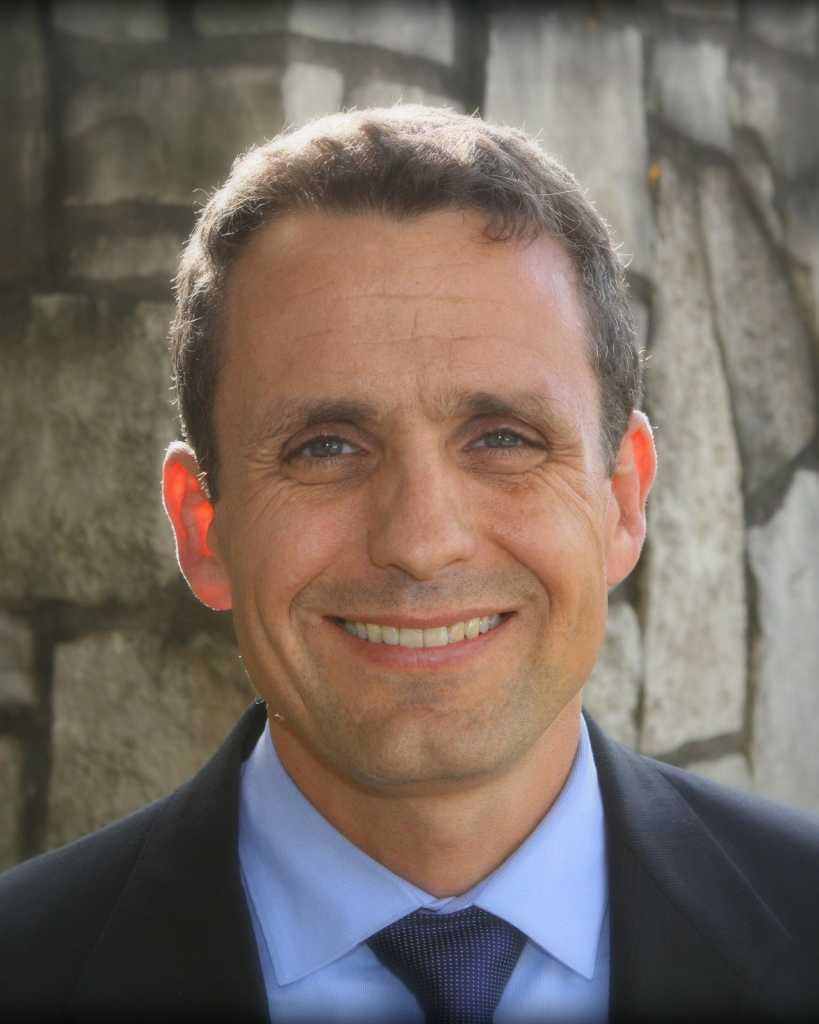- A few secretive AI companies could crush free society, researchers warn
- Key Cybersecurity Considerations for 2025
- Make the Most of Your Holiday Cybersecurity Awareness Efforts
- Stock your Kindle for summer: Get up to 93% off popular reads during Amazon's Book Sale
- I replaced my TV with a 4K UST projector - and the visual upgrade was worth it
Product-based IT: A blueprint for success

For veteran CIO Amir Arooni, the aha moment came during a master’s dissertation deep dive into why there were so many IT project failures. Digging through research examining the impact of standard conventions like siloed teams and staged gate processes, Arooni began percolating ideas for how to shift IT organizations away from the traditional project-oriented culture to something more agile, with greater business accountability and more responsiveness to changing customer needs.
“We came to the conclusion that the way we do things in IT is outdated,” says Arooni, now executive vice president and CIO at Discover Financial Services. “If you want to increase the success of IT projects, you need to create a team that is responsible for what they make and takes ownership over what they do.”
Since that 2011 revelation, Arooni has been doing just that: redefining IT organizations and service delivery models to embrace agile ways of working, including creating product-centric structures with persistent teams responsible for the entire lifecycle of a product.
Amir Arooni, executive vice president and CIO, Discover Financial Services
Discover Financial Services
Arooni is joined by scores of industry leaders across segments such as retail, financial services, healthcare, even government entities moving in this direction. Forrester estimates about a third of organizations have either made or are in the process of orchestrating the shift to product-centric structures with more to follow as cloud migration gives IT a platform to retool for greater business agility, according to Charles Betz, vice president and research director for enterprise architecture at Forrester.
“There’s been a fundamental hunger for the responsive creation of new digital capabilities through the dawn of computing and now there’s actually an ability to deliver systems at the speed of business,” Betz says. Cloud delivery is part of the solution, but product-centric teams help build trust and continuity of expertise. “Organizations don’t want fractional allocation — people rolling on to a project and rolling off,” he explains. “They want to bring work to a team … and make a team more responsible for outcomes as opposed to deliverable activities.”
Arooni, along with his CIO counterparts, have made a variety of structural changes and initiated a range of best practices to ensure a successful transition away from legacy-style project management to an IT operating model architected around product centricity. Following are their most significant shared strategies for making the shift successful.
Establish product ownership
Traditional IT project teams are no match when the goal is all about building solutions quickly and being hyper responsive to customer needs. At JP Morgan Chase, the approximately 12,000-person IT organization is being completely revamped to build solutions quickly with teams encompassing product owners along with technology, data, and design leaders.

Gill Haus, CIO for Consumer & Community Banking, JP Morgan Chase
JP Morgan Chase
Consider this product structure in the context of the account opening process. Instead of each business line, such as checking accounts or mortgage applications, employing a different team to design different account opening flows, account opening becomes the product backed by its own multifunctional Chase team. That team manages the account opening function throughout its lifecycle, from architecting the experience to managing backlogs and making tweaks to reduce friction for customers. The end result is that the account opening process remains consistent across channels. It can be reused by any other lines of business or Chase groups, streamlining software delivery while also ensuring a seamless customer experience across the Chase portfolio.
“The teams are responsible for the product and have the autonomy and wherewithal to make changes,” says Gill Haus, CIO for Consumer & Community Banking (CCB) at JP Morgan Chase. “No matter how agile you are, you are solving different problems for customers in different ways unless you are organized by product and are customer backed.”
Trust One is also knee deep in transforming its IT organization and operating model, transitioning away from a program management office (PMO) to a product-centered organization. Leadership worked to identify process owners within the business to become product owners within product families that are essentially owned by IT, according to Gary Jeter, Trust One’s executive vice president and chief technology officer.
“This helps us respond quicker and identify the right project to execute, delivering business value quicker,” Jeter says. Establishing technology and business owners also drives collaboration. “It gets people closest to the work helping to prioritize and drive deliverables,” he explains.
While it can be a challenge to identify the right product owners within the business, the changes, which have been implemented in phases since last September, are already increasing Trust One’s business agility, Jeter says.

Gary Jeter, EVP & CTO, Trust One
Trust One
Last December, the firm was presented with an opportunity to expand its portfolio by a fintech specializing in automotive refinancing — a set of services that weren’t part of its offerings or IT stack. Because of the IT organization transformation, Trust One was able to integrate the new auto refinancing capabilities into its digital banking platform in just shy of two months.
“This was not in the budget for the year nor was it on our roadmap, yet we were able to initiate cost-benefit analysis, do demos, and get it deployed as a two-month project,” he says. “In the old PMO model, it would have been added to the project backlog, taken a month to get in front of EVPs, then approved and probably double that time to get it across the finish line.”
Embrace agile practices
Few associate a government agency with a fast-track to business value, but Jamie Holcombe Jr., CIO at the United States Patent and Trademark Office (USPTO), would beg to differ thanks to the agency’s wholesale transformation to a product-oriented IT organization and agile culture. Along with replacing project teams with product teams and reimagining its PMO to be more of a coaching resource, USPTO adopted agile practices in earnest, including daily scrums, working in sprints as opposed to project plans, and embracing DevSecOps processes, Holcombe says.

Jamie Holcombe Jr., CIO, USPTO
USPTO
Changes were implemented on a small scale, among two or three teams at first, then scaled up. Ongoing communications emphasized that the new patterns of working and team structure were being made for the long haul, not just a passing fad. Soon, Holcombe says, people began to see results and wanted to be part of the transformation. “We were delivering all this stuff we never delivered before, and everyone wanted to be part of it,” he explains.
As part of its journey Align Technology, which manufacturers the Invisalign orthodontic devices, also reorganized its teams around products, processes, and experiences, not systems. Instead of a backend ERP team and front-end UI/UX team, the company now has a single “payments team” that melds people with expertise from the relevant ERP platform and UX designers, in addition to product owners, all driving towards the same goal: delivering a seamless payments expertise for customers, according to Ema Patki, vice president of software engineering at Align.
“The pivot from systems to processes and products has changed the focus of the discussion, from which applications we need to integrate to what is the process and experience we want to deliver and what capabilities do we need to build to realize those experiences,” Patki says. “These capabilities are then delivered using Scrum/agile methodologies in frequent, low-risk deployments to production, eventually leading to the launch of an end-to-end product.”
Establish metrics to incentivize teams
One of Align’s critical success factors was finding ways to incentivize teams to define their operating and governance models.

Ema Patki, vice president of software engineering, Align
Align
For example, the platform teams — which manage an overall platform like ERP or CRM and are responsible for best practices, uptime, and system hygiene — give engineers performance feedback specific as to how well product teams met the platform teams’ specific goals. At the same time, the product teams — which manage customer experience across multiple platforms — evaluate their counterparts on the platform side, providing input on the timeliness of code releases or assessing whether there were appropriate levels of coordination.
“This gives everyone a sense of ownership and allows people to hold each other accountable to collective goals,” Patki says.
Talent and culture are essential
Arooni came to Discover in March 2020, during the height of pandemic shutdowns with a primary mission to transform the technology organization, improve alignment between IT and business, and steer the organization to deliver better and faster results.
On Arooni’s watch, Discover launched Runway, a three-pronged program to transform IT by shifting to a product-centric way of working, automating as much as possible, and upleveling its talent bench, both by hiring more seasoned experts and by nurturing internal team members.
Central to the upskilling strategy is the Discover Technology Academy, a hub for training led by internal experts, along with learning journeys that provide clear guidance and pathways for advancement. There is also a slate of internally run hackathons and bootcamps.
“In the past, people came to the technology function as novices and built up expertise within Discovery,” Arooni says. “We needed to have better talent so we created a way to educate our own people as well as hire from the outside at a higher level of proficiency. Someone wants to know what an excellent API looks like — now they go to Discover Tech Academy because the standards and education are there.”
Listening to employees and understanding what’s working and what’s not is central to the change management exercise, and to winning collective hearts and minds. Employee feedback surveys, one-on-one sit downs, all-hands meetings — anything that helps the organization understand why you are doing what you are doing, including the pain points the change will resolve, is a worthwhile approach, Arooni says.
So too is sharing success stories and showing team members what success looks like. Doing so will motivate people and engender broad organizational support.
“You need to show leadership believes in the new direction and that you’re able to scale the changes,” Arooni says. “Tech people need to learn how to be thought leaders instead of order takers, and their business colleagues need to learn to deal with technology. You need to educate everyone about what you are doing.”
Even though agile is at the heart of this transformation, reorienting an IT culture to be product-oriented, not project-focused is a marathon, not a sprint.
“There isn’t a done,” says Chase’s Haus. “You will continue to be doing this going forward. Being an agile organization means being agile forever, learning and adapting as you go to provide better experiences for customers.”

